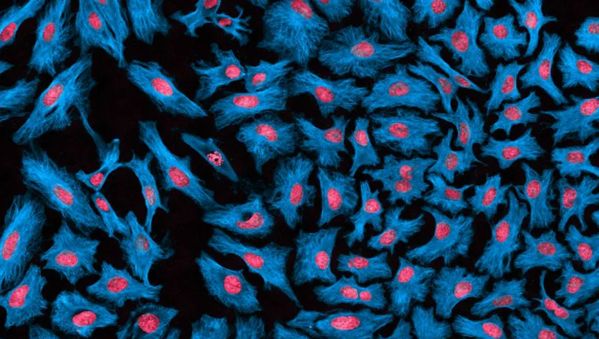Fluorescence filters can have a dramatic effect on outcomes in Life Sciences
Sophisticated optical instrumentation facilitates advanced bioimaging, and high-performance optical filtering improves fluorescence detection systems. Because proper optical filtering boosts throughput and enables wide-scale blocking, it solves problems like increasing the sensitivity of a system to detect infinitesimally small fluorescent signals emitted from biological samples. Too much light can lead to overexposure at the sensor, thus masking the signal—the filter helps to remove unwanted light so that the fluorescence response can be identified and measured. In fact, filters are arguably the most important element defining system performance for fluorescence detection. And thanks to our manufacturing innovation, we can do so at competitive price points.

Protein in a newly fertilized egg cell
Bandpass filters transmit light at a specific wavelength, or over some wavelength band, while blocking the adjacent spectrum on either side. They are important for life sciences because they allow separation—in some cases with sub-nanometer level accuracy—of critical vs. unwanted light in the final image. Thin-film, hard-coated bandpass filters offer higher light throughput compared to soft-coating alternatives. This, combined with steeper transitions to high out-of-band optical density (OD) blocking, enables enhanced signal-to-noise ratios (S/N). This can have a dramatic impact on outcomes for applications like laser scanning fluorescence confocal microscopy, for instance, where the S/N is a key consideration and ultimately dictates the achievable contrast in the final image quality.


